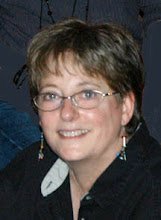collagraph tutorial
 to say that i'm thrilled to be going to the fiber arts retreat at the atlantic center for the arts in florida in march would be an understatement! i'm looking forward to finally meeting pamela in canada as well as many other people that are going to be there.
to say that i'm thrilled to be going to the fiber arts retreat at the atlantic center for the arts in florida in march would be an understatement! i'm looking forward to finally meeting pamela in canada as well as many other people that are going to be there. the art center is full of great studios and tools, including a printing press, and there are many of us who are interested in playing with that. so i've put together info on doing collograph plates while i'm getting some ready to bring with me.
a collagraph is a printing plate constructed of collaged elements on a thin material, such as matte board. some of the materials that work well are most papers (typing, printmaking, drawing), self adhesive paper and/or plastic labels, paper tape, plastic packing tape, acrylic paint and white glue. i love these stickers that i bought on sale way back when at michaels; i've used them both for collagraph plates, and also as resists when painting canvas and fabric. they stick REALLY well.
 on the right is a plate i made using clear packing tape that i cut with a rotary cutter. i also did some relief work, and etched lines into the board.
on the right is a plate i made using clear packing tape that i cut with a rotary cutter. i also did some relief work, and etched lines into the board. below is a plate made with mylar. i cut it into strips with a rotary cutter, then scrunched it up to wrinkle it, and glued it down with acrylic paint on the left, and white glue on the rest of it..
the next step will be to coat these plates with white spray paint. it keeps the ink from soaking into the cardboard, and also makes it easy to clean the surface.
some materials that don't work well are drafting tape / duct tape/ contact paper (won’t stay stuck), silk or real flowers and leaves , and sandpaper (holds too much ink.
and finally here is one of the prints i made layering 3 different collage plates. i used one of my extra prints on one of my 2002 journal pages.

Labels: fiber retreat, printing techniques




3 Comments:
How does something with so little relief produce a print? Do you need the press? do you just ink on it and press with it like a linoleum block?
I wish I wish I wish I was going to the fiber arts retreat and could get you to show me in person!
Thank you, thank you for this!!!!
hi claire, I came to your blog to see the birds and have enjoyed seeing your work too, I love the tree piece and am pleased to see someone else using collographs on fabric, I only learnt about collographs a couple of years ago but love them one of my fav textures is scrunched tissue paper stuck with pva it's a bit like the cracking in batik, thanks for sharing,
Post a Comment
Subscribe to Post Comments [Atom]
<< Home